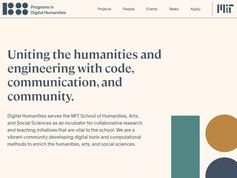review of digital education
Centers for studies in Digital Humanities and Art
|
|
|
Teaching and Learning Digital Storytelling
Digital Storytelling, usually take the form of a relatively short story (less than 8 minutes), is a method of using computer-based tools to tell stories. Like the art of traditional storytelling, digital stories focus on a specific topic and a particular point of view.
As a combination of computer-based images, text, recorded audio narration, video clips and/or music, the topics used by digital storytelling can range from personal tales to the recounting of historical events, from exploring life in one's own community to the search for life in other corners of the universe – almost anything is possible, see : TEMATICE - Recherche TICE.
Educational Uses for Research
Digital Storytelling has been a tool used by researchers of early childhood education and multimedia technology. At the University of Texas, researchers are conducting a research study with elementary and middle school students and teachers from the border region of Texas, New Mexico and Mexico.
In examining how students used multimedia software tools to create digital stories based on multicultural folktales and myths, the study sought to measure the effectiveness of the digital torytelling activity by examining the students understanding of the major points in the folktales as well as their technology skills in creating the stories.
Many libraries or museums have oral histories that have been recorded. These can be paired with historical photographs to create a visual/interactive historical experience.


